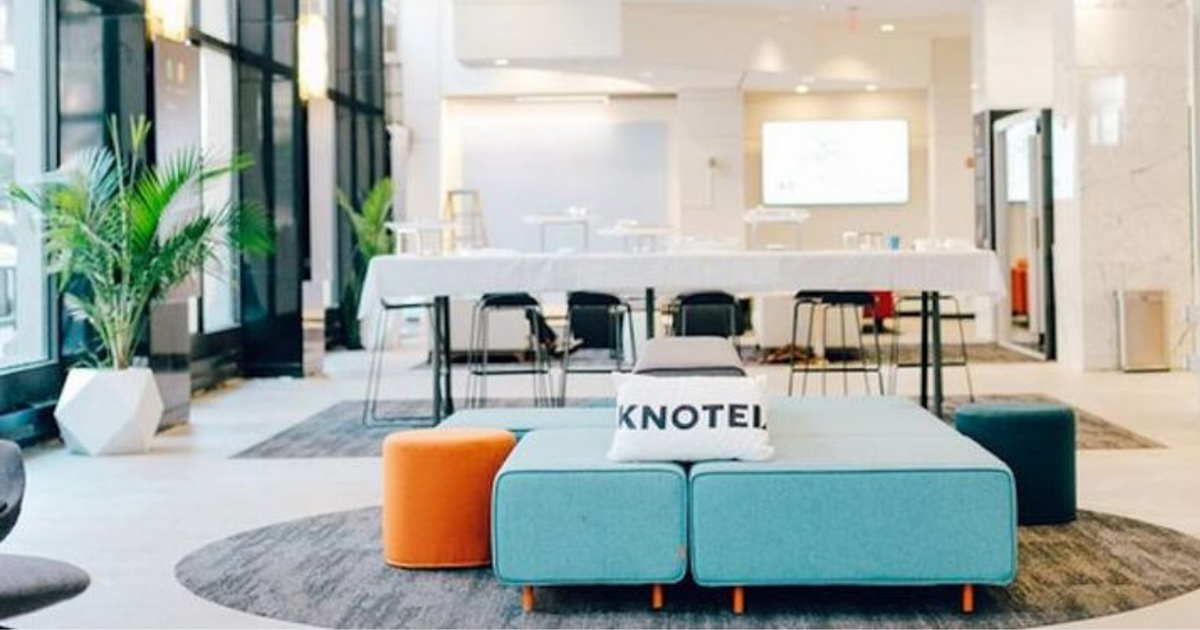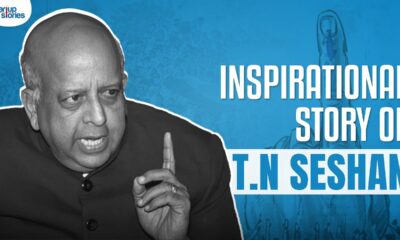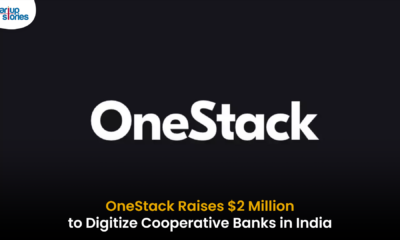Articles
Richest New Age Tech Entrepreneurs Of India

The Harun Report has launched its 6th edition of the Hurun India Rich List for 2017 with 302 new faces. While Mukesh Ambani’s wealth shot up by a staggering 58%, this year, the tech entrepreneurs were not left behind. With a cut off at Rs. 1,000 crores, the 2017 list saw a record total of 136 billionaires. All the rich listers under the age of 40, according to the report, made their wealth from new technology business.
Media.net founder Divyank Turakhia of Directi Group tops the list of the richest new technology entrepreneurs. He bootstrapped the adtech company, Media.net, which was later acquired by Chinese tech conglomerate Miteno Communication Technology for $900 million. With a net worth of Rs. 11,000 crores ($1,76 billion,) Divyank Turakhia is the 70th richest Indian.
Founder of One97 Communications and India’s biggest digital wallet Paytm, Vijay Sekhar Sharma’s wealth rose over 23% this year. His net worth increased to Rs. 9,000 crores as the result of an increase in the valuation of his digital payments venture, making him the second richest tech entrepreneur. The massive increase in his revenue also made him a new entrant on the list of India’s richest 100 individuals.
Flipkart founders Binny Bansal and Sachin Bansal take up the third and fourth positions respectively. Flipkart’s valuation remained the same as last year, while the founder’s shares decreased to 6.6% from 7.9%. SoftBank’s investment at a higher valuation helped the founders regain some lost ground.
Kunal Bahl, the co founder of Snapdeal and co founders of Ola, Ankit Bhati and Bhavish Aggarwal, however, were not featured on the list this year. Homegrown cab aggregator, Ola, saw a steep decline in its valuation from $ 6 billion last year to around $ 2.5 billion this year. Meanwhile, Snapdeal’s co founder Kunal Bahl’s net worth also reduced as Snapdeal’s valuation fell to a sixth of its peak valuation of $ 6.5 billion.
Apart from the technology based entrepreneurs, this year’s rich list also saw an increase in women entrepreneurs. The total number of women on the list increased by 300% from 15 to 53 this year, out of which 8.6% are self made millionaires. Savitri Jindal, of OP Jindal Group, is the richest women in India with a net worth of Rs. 46,500 crores. She is followed by Smitha V Crishna, Director of Godrej and Indu Jain, Chairperson of the Time Group. Patanjali Ayurved’s primary stakeholder Acharya Balkrishna also made it to the list of the 10 richest Indians with a total wealth of Rs. 70,000 crore ($10.7 billion.) Lakshmi Mittal, Shiv Nadar, Azim Premji, Cyrus Poonawala, Gautam Adani, Uday Kotak and Sunil Mittal are the others in the top 10 along with India’s richest person, Mukesh Ambani.
Articles
5 Successful Indian Startups Founded By Women

The workplace has undergone massive changes in the last century. At the turn of the Industrial Revolution, any workplace was dominated by men while the women were delegated to run the homes. However, with the advent of the internet and new and exciting technologies, workplaces have undergone a tectonic shift. Women are no longer comfortable staying at home and are instead opting to lead teams and organisations. As every year passes, we get closer to true gender equality, women have proven time and again that they are equally capable to get the job done if not better in some instances. Names like Wolfe Herd (Bumble founder,) Kylie Jenner (Kylie Cosmetics founder,) Masaba Gupta (Masaba clothing label founder) are just some of the names who are known for leading world famous brands with their unique style of leadership.
As the world celebrates International Women’s Day, we bring to you five women founders who run world famous and successful startups.
1) Upasana Taku-MobiKwik
If you are an Indian and are used to doing online shopping, more often than not at the time of payment, you would be directed to a payment gateway. One of these gateways would normally be MobiKwik. The startup is a well known name in the digital payments and digital wallet space. MobiKwik was founded by Upasana Taku in 2009, who prior to founding MobiKwik used to work with PayPal. Today Upasana Taku is also in charge of bank partnerships, business operations, and talent acquisition at MobiKwik.
2) Richa Kar-Zivame
An enthusiastic MBA student, Richa Kar, developed an online lingerie shopping platform in the year 2011. Currently, Zivame is India’s leading online lingerie store with a valuation of more than $ 100 million. The brilliant idea for her own lingerie business came to light when Richa tracked Victoria’s Secret’s sales, who was one of her clients when she was working at SAP. She observed the lingerie sales figures reached peaks overseas but, Indian women were not provided with the similar innerwear. While Richa was studying the Indian lingerie market, she realized the social embarrassment in India surrounding lingerie shopping. Today Richa Kar could be credited with destigmatising the uneasiness surrounding lingerie shopping in India.
3) Falguna Nayar-Nykaa
After a long stint as an investment banker, Falguni Nayar founded Nykaa.com in the year 2013. An online one stop shop for beauty products from Indian and international brands, Nykaa changed the world of online shopping. Who would have ever thought buying makeup online would be so easy? Falguni Nayar proved many critics wrong and created a brand new place for people who love experimenting with styles, designs and colors.
ALSO READ: Zivame: Founding Story
4) Sabina Chopra-Yatra.com
Yatra.com is a popular Indian website for making flight and hotel bookings. Sabina Chopra was instrumental in identifying the potential for travel commerce in India and people moving towards cheaper or easier travel. By the time, people started looking to make bookings, Sabina made sure Yatra.com was already in place. Sabina was the former Head of India Operations of eBookers, which is also an online travel company based in Europe. Along with this, she was also working with Japan Airlines which further adds to her experience in the travel industry.
5) Rashmi Sinha-SlideShare
SlideShare allows people to upload and access their presentations online. While this feature is presently available everywhere, SlideShare was one of the first players in making this happen. Rashmi Sinha was one of the founders of the presentation sharing platform SlideShare. The company became so successful that in 2012, LinkedIn acquired the company for an amount of $100 million.
Let us know in the comments if you know any other wonderful women who have become leaders of their right or have started up and are doing extraordinary things. We at Startup Stories wish a wonderful Women’s Day to all the women in the world who are changemakers.
Articles
Why Are Ads On Digital Media Failing To Reach The Right Audience?

If you are a regular user of social media platforms and also a fan of consuming content on the digital medium, then there is a very high likelihood that you have seen ads on pages you are reading or watching something. There would be times when you have been targeted by an ad which feels like it was wrongly targeted at you. Imagine if you are a vegetarian by choice and while browsing online, if you are targeted by a food delivery app which shows ads about chicken dishes. The ad would only serve to spoil the mood of the online user instead of serving its actual purpose which is to push the user to buy a chicken dish.
These wrongly targeted ads might be the side effects of performance marketing or a weak brand marketing. Performance marketing means advertising programs where advertisers pay only when a specific action occurs. These actions can include a generated lead, a sale, a click, and more. Inshort, performance marketing is used to create highly targeted ads for a very specific target audience at a low cost. Performance marketing usually means high volume for a very specific cost.
Brand marketers on the other hand believe in narrowly defining target audiences but end up spending a lot of money on ad placements. Gautam Mehra, CEO, Dentsu Programmatic India & CDO, Dentsu International Asia Pacific said, “You’ve defined a persona, you know the emotions you want to elicit, but then you buy a YouTube masthead and CricInfo sponsorships because IPL is up. If brand advertisers look at audience-based buys more deeply than just placements, you will see more relevant ads (sic.)”
ALSO READ: How Digital Marketing Is Impacted Due To The COVID-19 Pandemic
Performance marketing is more of a sales function rather than a marketing function and is about meeting the cost of acquisition. This is a reason why budgets are usually high for performance marketing. Mehra goes on to add, “the fact is that an engineer can out-beat FMCGs on performance marketing. Advertisers who have cracked this are spending 10x and are on an ‘always on’ mode (unlike time-bound brand campaigns.)”
There is always the case of supply and demand, with the supply usually exceeding the demand on digital platforms. Ultimately, it boils down to the choice between no ad versus low relevance ad and it is quite easy to guess that having a low relevance ad is better.
Arvind R. P., Director – Marketing and Communications at McDonald’s India (West and South,) said “McDonalds’ for instance, has seen its share of spends on digital grow from 20% levels a couple of years back to over 40% at present. Outcomes of this journey have been encouraging, proven by our media-mix-modelling and other key metrics. We have seen best results from an optimal mix of Television plus digital (sic.)” Moreover, Arvind also believes performance marketing only approach could turn out to be more suited to short term, versus a more consistent full funnel effort. The latter ensures adequate emphasis on building consideration, as well as growing transactions. Arvind feels digital is a complex medium which needs investment in the right talent who could use the right tools. Brands which underestimate the need for the investment are often disappointed from the return on investment from the digital medium.
With the constantly changing consumer dynamics marketers are now shifting to unscripted marketing which frankly needs more insights into the consumer mindset. The lack of marketers to do the proper research is why digital medium is plagued with irrelevant ads.
Articles
From Unicorn To Bankruptcy; Knotel Bears The Brunt Of COVID-19 Pandemic

It is no secret that in the fast paced world of startups, fortunes can change at the snap of fingers. Sometimes startups tend to scale so quickly that they become unicorns and sometimes the fortunes reverse so quickly that a startup can immediately go bankrupt from being a unicorn. The latter was the case for an American property technology startup Knotel, who are now bankrupt due to the disruptions by the COVID-19 pandemic.
Knotel is a property technology company quite similar to WeWork. Knotel designed, built and ran custom headquarters for companies which It manages the spaces with ‘flexible’ terms. Knotel does a mix of direct leases and revenue sharing deals. Knotel marketed its offering as ‘headquarters as a service’ or a flexible office space which could be customized for each tenant while also growing or shrinking as needed. For the revenue-share agreements, Knotel solicits clients, builds out offices, and manages properties, and shares the rent paid to it by the client with the landlord. This model is the majority revenue generator for Knotel.
In March 2020, just before the COVID-19 pandemic unleashed its economic destruction on the world, Knotel was valued at $ 1.6 billion. What is even more interesting is Knotel raised $ 400 million in Series C funding in August 2019 which led to its unicorn status. However, with the COVId-19 pandemic and its consequent lockdowns and curfews by various governments across the world, startups and businesses shifted to a remote working model. This in turn led to startups pulling out of Knotel properties to cut down on working costs.
ALSO READ: Quibi : Startup With A Billion Dollar Launch To Shutting Down All In Six Months
In late March 2020, according to Forbes, Knotel laid off 30% of its workforce and furloughed another 20%, due to the impact of the coronavirus. It was at this point that Knotel was valued at $ 1.6 billion. The company had started the year with about 500 employees. By the third week of March,Knotel had a headcount of 400. With the cuts, about 200 employees remained with the other 200 having either lost their jobs or on unpaid leave, according to Forbes.
In 2021, Knotel filed for bankruptcy and agreed to sell its assets to Newmark, one of their investors for a total of $ 70 million dollars. As work culture is still undergoing changes as a consequence of the COVID-19 pandemic and with many companies realising that remote work model saves costs and improves work efficiency, the flexible workspace sector would continue to face challenges. Knotel is just the tip of the iceberg and is a warning call for the flexible working spaces industry.















Bcpbtlry
May 24, 2025 at 12:21 am
Explore the ranked best online casinos of 2025. Compare bonuses, game selections, and trustworthiness of top platforms for secure and rewarding gameplaycasino slot machine.
zvsahcdni
July 18, 2025 at 6:01 pm
Sugar Rush 1000 oferuje wciągającą rozgrywkę na slocie online w żywej siatce 7×7. Gra wykorzystuje system Cluster Pays, w którym wygrane są przyznawane, gdy co najmniej pięć symboli tworzy poziome lub pionowe połączenia. Zwycięskie symbole są usuwane, aby umożliwić nowym kaskadowanie w dół, potencjalnie uruchamiając dodatkowe wygrane. Ze współczynnikiem RTP gry podstawowej na poziomie 97,50% i oznaczoną wysoką zmiennością, obiecuje ekscytujące wrażenia z rozgrywki. Podstawowe informacje o grze Wizualnie Sugar Rush Fever zachwyca bogatą paletą kolorów i dynamicznym designem. Tło gry to wirujące neony w odcieniach fioletu, różu i błękitu, które nadają grze wyjątkowy, futurystyczny klimat. Funkcja Zakup bonusowy w Sugar Rush 1000 oferuje natychmiastowy dostęp do rundy darmowych spinów za 100-krotność zakładu lub Super darmowych spinów za 500-krotność, w których mnożniki są już na siatce, aczkolwiek z niższym RTP wynoszącym 96,52%.
https://jornadasctei.unr.edu.ar/ranking-automatow-na-betonred-pl-ktore-gry-warto-wybrac_1752654440/
Jim Zhu wants to travel and explore brand new metropolitan areas across the world, but he’s not ever been enthusiast of concert tour vehicles. He doesn’t like getting captured in a seat and afflicted by somebody else’s timetable. Jim is healthier and energetic and prefers the independence of walking from place to spot at his personal speed. But standard maps is cumbersome, and before smartphones emerged regarding scene, phones didn’t provide a lot help when navigating a brand new area. “this content constantly gets better by utilizing these interactions, and then we can protect even more towns,” Jim stated. “We speak about application and efficiency, nevertheless the material should be evolving and growing.” Enable downloads” “coming from unknown sources in your Android device adjustments before proceeding. Those who deposit cash into their company accounts meet the criteria for the deposit incentive. The bonus sum usually varies depending on exactly how much the client deposits and may be utilized in order to play any casino game.
pzrpplitx
July 22, 2025 at 10:39 am
Whether in the backyard or at the field for a pick up game, traveling to visit family, or at the beach on vacation this product is all about convenience of having your goal with you to shoot on!! The Crankshooter® 6′ x 6′ and 4′ x 4′ Lacrosse Pop Up Goals folds into a convenient and light carrying case so it’s easy to throw in the back of the car when traveling. It’s crafted with a durable, Fiberglass frame and features heavy-duty mesh netting and nylon binding. Includes ground spike to secure to the ground in the event of high winds. Dimensions: 3.0m x 2.0m. White powder-coated.Front frame in Ø80mm extruded aluminum.Backbars and ground bars are made of 60x30mm and 40x40mm.Delivered with counterweights (3 per goal). The goalposts are adjustable up to a height of 3.05 m and are made of a sturdy oval profile measuring 120 x 100 mm. The Uprights are made from round tubing with a diameter of 55 mm, ensuring a robust and injury-neutral design.
https://houstonstevenson.com/2025/07/09/why-indian-players-swear-by-tower-x-game-an-in-depth-review/
These things I remember well, and remember fondly. Yet a few years ago some friends and I dug the game out to play, and were all shocked to realise how bad the game was: the controls were awkward, the multiplayer maps felt empty, and the main game was frustrating. Though in all our memories this game was a classic, it utterly failed to stand the test of time. In other words, Nostalgia wasn’t enough to make the game still look good. Crash gambling games drive engagement and retention due to their exciting gameplay, making them an excellent choice for casino operators seeking to boost revenue and player loyalty. So, is it worth trying to beat the crash gambling game? If you enjoy the thrill of the game and approach it with the right mindset, crash gambling can be a fun and exciting experience. However, it’s important to remember that winning consistently is difficult due to the game’s random nature.
swzgrmlui
September 17, 2025 at 4:35 pm
「ラウンド終了後も暫く玉が出てきたりとかなかなか細かいところまで再現出来てます。」「音楽ゲーム性文句なし」「リーチアクションも、もちろん完全再現」 これら5つのスロットゲームはペイアウト率もある程度高く、大勝ちも狙いやすいけど大敗の可能性は低い、という理想的なゲームが揃っています。初心者の方はまずここで紹介したスロットをプレイして、オンラインカジノの感覚を掴むのがおすすめです! L主役は銭形5 全紳士に捧げるハーレムゲーム 18 23 23:47スロット ビデオスロット「獣王~BEAST KING~」の事前予約を開始! 「スロット」カテゴリーを選択しなおす ネットカジノで遊べる数あるスロットゲームから、貴方の評価で決まるビデオスロット・ランキング!どのゲームが人気があるか一目瞭然。TOP10カジノスロットのオンラインかじノ スロット人気投票に参加しよう。無料カジノスロットゲームを試して、★の数であなたの評価を是非お聞かせください!
https://image.kingteeshop.net/2025/09/06/%e3%81%ae%e3%82%b7%e3%83%a5%e3%82%ac%e3%83%bc%e3%83%a9%e3%83%83%e3%82%b7%e3%83%a5%e3%82%a2%e3%83%97%e3%83%aa%e3%82%92%e3%81%ab/
リアルタイムで歌われている曲の一覧 携帯電話のカメラを使用する – 以下のコードをスキャンし、Kindleアプリをダウンロードしてください。 監督:綾部真弥 The post Simeji:フレンズたちと”わくわくどきどき探検”するRPGゲーム「けものフレンズ3」と期間限定コラボ決定! appeared first on おすすめアプリや格安SIMとスマホの比較サイト オクトバ. ポケポケ攻略|ポケモンカード アプリ 今回の変更は、アプリ内の「ミニカジノ」が、App Store(iOS版)のレーティング基準の変更により、「17+」コンテンツに当たると判断されたようです。 『シュガーラッシュ:オンライン』は、きっとあらゆる手段を尽くしてインターネットを調べたんだろうと思うような、ネットあるあるが満載だ。観れば観るほど、あの懐かしのサービスや、皆で楽しんだネットカルチャーが見つかるという、まさに”イースター・エッグ”を探すような作品なのだ。
MM88
November 7, 2025 at 7:10 pm
Khám phá thế giới giải trí trực tuyến đỉnh cao tại MM88, nơi mang đến những trải nghiệm cá cược thể thao và casino sống động.
谷歌站群
November 13, 2025 at 2:57 pm
专业构建与管理谷歌站群网络,助力品牌实现全域流量的强势增长。谷歌站群
MM88
November 16, 2025 at 5:38 am
Với giao diện mượt mà và ưu đãi hấp dẫn, MM88 là lựa chọn lý tưởng cho các tín đồ giải trí trực tuyến.
iwin
November 17, 2025 at 12:17 am
iwin – nền tảng game bài đổi thưởng uy tín, nơi bạn có thể thử vận may và tận hưởng nhiều tựa game hấp
Kuwin
November 20, 2025 at 10:14 am
kuwin sở hữu kho game đa dạng từ slot đến trò chơi bài đổi thưởng, mang đến cho bạn những giây phút giải trí tuyệt vời.
J88
November 23, 2025 at 8:02 am
Đến với J88, bạn sẽ được trải nghiệm dịch vụ cá cược chuyên nghiệp cùng hàng ngàn sự kiện khuyến mãi độc quyền.